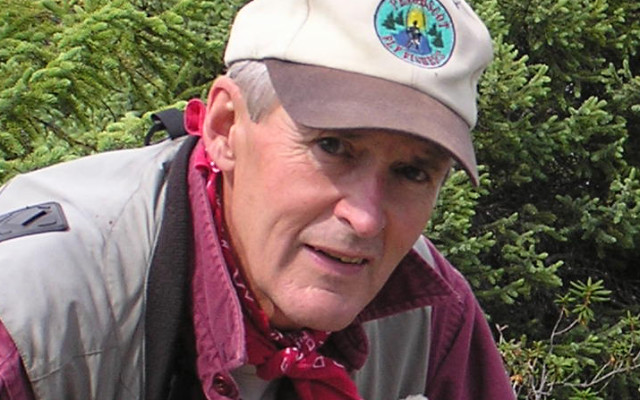
Tribal deer yard is a laboratory for studying the herd
By V. Paul Reynolds
It is late February. For Maine’s whitetail deer population, this is the beginning of the make or break slope which will dictate the survival equation for Maine’s popular ungulates. Even though the days are slowly lengthening and warming some as we enter March, deer struggle against opportunistic coyotes and other predators, as well as starvation.
This is where the deer wintering areas, or “yards,” can help the deer hold out until the spring “greenup” in mid April.
As Maine works at restoring its declining deer numbers in the north woods, identifying and protecting historic deer wintering areas has taken on a new urgency. The Maine Department of Inland Fisheries and Wildlife now has dedicated funding that is legally earmarked to actually purchase known deer yards, so that the yards can be protected in perpetuity.
This acquisition of deer yards is a work in progress. At least one major deer yard in Aroostook County has been acquired by MDIF&W.
How many historic deer yards do we have? According to MDIF&W spokesman Ryan Robicheau, that figure is about 350,000 acres, or 2 percent of all forestland in the state.
One of Maine’s largest deer wintering areas is on Passamaquoddy tribal land in Indian Township near Princeton. According to the tribal wildlife biologist, John Sewell, this yard comprises a whopping 12,000 acres. Sewell recently appeared as a studio guest on the statewide radio program The Maine Outdoors, which is broadcast Sunday nights on the Blueberry Broadcasting Network. Sewell had some interesting insights into deer behavior in Downeast Maine.
The huge tribal deer yard is an ideal “laboratory” for studying deer behavior.
In 2017, the Passamaquoddies collaborated with the Downeast Lakes land Trust and installed telemetry collars on 20 deer in the Princeton area. This undertaking was also connected to the Northeast Deer Research Partnership, which includes northern New England states, as well as neighboring New Brunswick.
The study revealed that these collared deer generally traveled 16-20 miles to get to the Indian Township deer yard. According to Sewell, one doe set a new record and traveled from Indian Township to Oxbow, Maine for a summer in Aroostook County. That’s a stunning 120 miles as the crow flies. In the fall, the collared doe was tracked and found alive but immobilized somewhere between Oxbow and Princeton.
The study also showed that, for some yet-to-be-explained reason, pregnant does travel some distance to specific areas to fawn, usually near water. Sewell hopes to one day conduct a reliable fawn mortality study in his area.
“Predator management in deer yards is critical,” says Sewell. “Last winter in the Downeast deer yard, the tribe snared 54 coyotes, which resulted in only one yarding deer being killed by coyotes.”
What I found especially interesting was this: Back during the spruce budworm epidemic, when commercial forest owners were conducting wholesale salvage cuts of their timber holdings, Passamaquoddy tribal leaders refused to follow suit. Sewell believes that this refusal to conduct the salvage cuts resulted in a big plus – the retention of an historic and expansive Maine deer yard!
The village of Grand Lake Stream, near Princeton, has for a time been ground zero for a local whitetail population, much appreciated by the locals, who enjoy seeing them forage for greenery near town.
To Sewell’s surprise, his telemetry study of these deer found that, for some reason, a number of the Grand Lake Stream does in the fall will travel considerable distances to seek out a buck for mating. This is most unusual, according to the tribal biologist. It is common knowledge that in the fall a testosterone-laden buck, hardly shy, will travel long distances night and day to find a receptive doe. But receptive does, according to Sewell, don’t generally travel to seek out bucks.
So what’s going on at the Stream? Any ideas?
The author is editor of the Northwoods Sporting Journal. He is also a Maine Guide and host of a weekly radio program “Maine Outdoors” heard Sundays at 7 p.m. on The Voice of Maine News-Talk Network. He has authored three books. Online purchase information is available at www.sportingjournal.com.